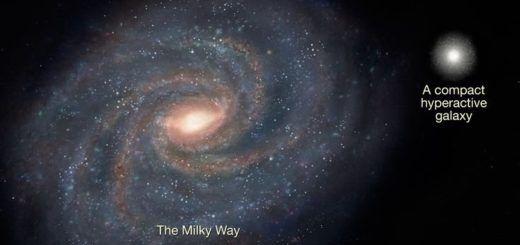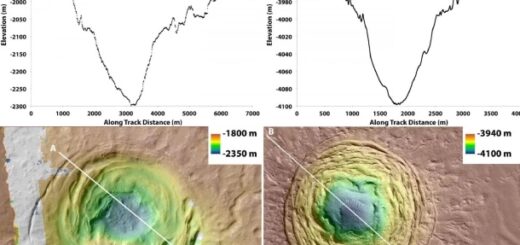Spectacular Never-Before Extremely Large Bright Storm Seen On Neptune
Astronomers have taken striking images of a spectacular, never-before extremely large bright storm on Neptune.
The incredible storm system spotted near Neptune’s equator is nearly the size of Earth! The center of the storm complex is ~9,000 km across, about 3/4 the size of Earth, or 1/3 of Neptune’s radius.
This massive storm system, which was found in a region where no bright cloud has ever been seen before, is about 9,000 kilometers in length, or one-third the size of Neptune’s radius, spanning at least 30 degrees in both latitude and longitude.

Using the Keck telescope astronomers could see this massive storm system in a region where no bright cloud has ever been seen before. The storm brightened considerably between June 26 and July 2.
“Seeing a storm this bright at such a low latitude is extremely surprising,” said Molter, who spotted the storm complex near Neptune’s equator during a dawn test run of twilight observing at W. M. Keck Observatory on Maunakea, Hawaii. “Normally, this area is really quiet and we only see bright clouds in the mid-latitude bands, so to have such an enormous cloud sitting right at the equator is spectacular.”
“Historically, very bright clouds have occasionally been seen on Neptune, but usually at latitudes closer to the poles, around 15 to 60 degrees north or south,” said Imke de Pater, a UC Berkeley professor of astronomy and Molter’s adviser. “Never before has a cloud been seen at or so close to the equator, nor has one ever been this bright.”
Winds on Neptune can reach supersonic speeds with the fastest observed wind speeds at the equator reaching up to a violent 1,000 mph. To put this into perspective, a Category 5 hurricane has wind speeds of 156 mph. Neptune orbits the sun every 160 years, and one season is about 40 years.
Astronomers think a huge, high-pressure, dark vortex system anchored deep in Neptune’s atmosphere may be what’s causing the colossal cloud cover.
As gases rise up in a vortex, they cool down. When its temperature drops below the condensation temperature of a condensable gas, that gas condenses out and forms clouds, just like water on Earth. On Neptune, however, methane clouds form.
As with every planet, winds in Neptune’s atmosphere vary drastically with latitude, so if there is a big bright cloud system that spans many latitudes, something must hold it together, such as a dark vortex. Otherwise, the clouds would shear apart.
“This big vortex is sitting in a region where the air, overall, is subsiding rather than rising,” said de Pater. “Moreover, a long-lasting vortex right at the equator would be hard to explain physically.”
If it is not tied to a vortex, the system may be a huge convective cloud, similar to those seen occasionally on other planets, like the huge storm on Saturn that was detected in 2010. However, such a cloud would be expected to smear out considerably over a week’s time.
“This shows that there are extremely drastic changes in the dynamics of Neptune’s atmosphere, and perhaps this is a seasonal weather event that may happen every few decades or so,” said de Pater.
Whatever the cause may be, it’s a stunning discovery that will eventually help astronomers to better understand Neptune’s atmosphere and get a clearer picture of this icy giant’s global circulation.



 Creators of mankind
Creators of mankind Description of “Tall white aliens”
Description of “Tall white aliens” Where they came from?
Where they came from? About hostile civilizations
About hostile civilizations The war for the Earth
The war for the Earth “Tall white aliens” about eternal life
“Tall white aliens” about eternal life Video: “Nordic aliens”
Video: “Nordic aliens” Aliens
Aliens Alien encounters
Alien encounters The aliens base
The aliens base UFO
UFO Technology UFO
Technology UFO Underground civilization
Underground civilization Ancient alien artifacts
Ancient alien artifacts Military and UFO
Military and UFO Mysteries and hypotheses
Mysteries and hypotheses Scientific facts
Scientific facts


















